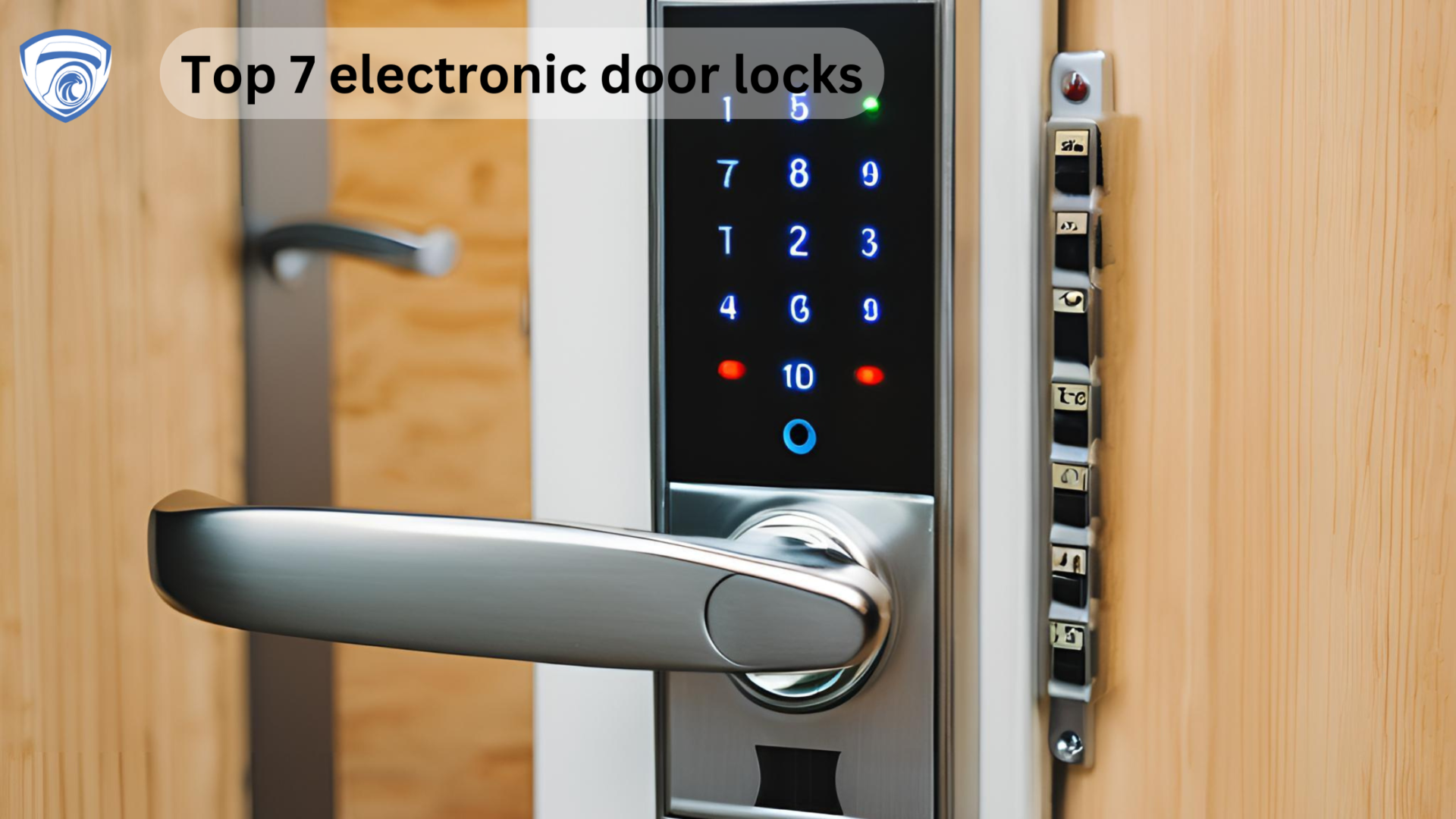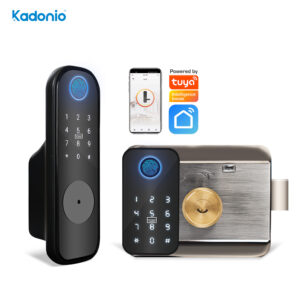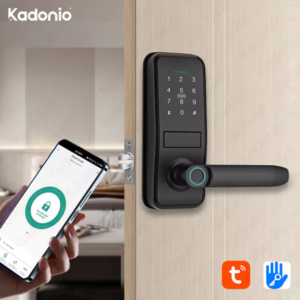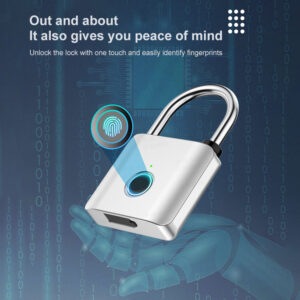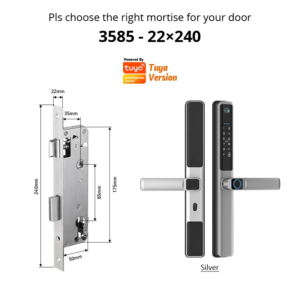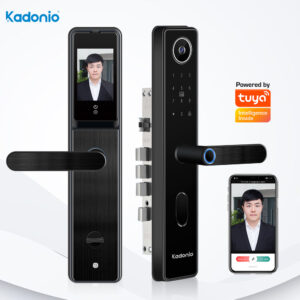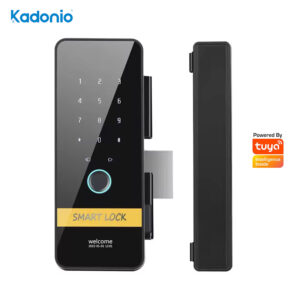Top 7 electronic door locks | Best Buying Guide in 2025
Electronic door locks are the future of home security in 2025. They bring convenience and advanced features. These locks replace traditional keys with modern solutions. From keyless entry to app control, they are secure and easy to use. This guide reviews the top 7 electronic door locks for 2025.
What Are Electronic Door Locks and How Do They Work?
Electronic door locks are modern devices that secure your doors without traditional keys. These advanced locks operate through keypads, smartphones, or fingerprint scanners.
Electronic door locks send signals to open or close. With Wi-Fi or Bluetooth, you can control them remotely. Their features ensure safety and convenience for modern homes.
Are Electronic Door Locks Secure Against Hacking and Tampering?
Electronic door locks are designed to resist hacking and tampering. They use AES-256 encryption to secure communication. This makes it difficult for hackers to intercept. Many modern smart locks also include biometric authentication. Additionally, two-factor authentication provides an extra layer of security.
Additionally, tamper alerts notify you of suspicious activity. This ensures immediate action can be taken. Regular software updates are crucial to maintain the security of smart door locks. Some models include an auto-locking feature. It activates after many failed access attempts. This improves reliability and home protection.
What Are the Different Types of Electronic Door Locks?
Electronic door locks come in different types. Each offers unique features for various needs.. Let’s explore these options to help you find the best match.
Keypad Locks
Keypad locks allow you to unlock doors by entering a numeric code. They cut the need for keys, making access simple. These electronic door locks are highly convenient and user-friendly.
Kadonio Tuya WiFi Digital Keypad & Fingerprint Smart Lock
Pros:
- Remote Control: Operate the lock conveniently via the Tuya app.
- WiFi Enabled: Ensures seamless connectivity for remote access.
- Keypad Access: Provides an alternative unlocking method with PIN codes.
- Fingerprint Security: Offers advanced biometric access for enhanced safety.
- Smart Integration: Compatible with smart home systems for added functionality.
Cons:
- WiFi Dependency: Requires a stable connection for optimal performance.
- Battery Usage: Relies on batteries, needing regular replacement.
- Installation Complexity: May need professional setup for proper functionality.
- Price Point: Higher cost compared to basic smart locks.
Kadonio Card Cylinder Smart Door Lock
Pros:
- Card Access: Easy and secure entry with card-based access.
- Euro Profile Cylinder: Offers high security and compatibility with standard doors.
- Many Unlocking Options: Includes digital code and traditional keys.
- Durable Design: Built with robust materials for long-lasting performance.
- Stylish Appearance: Sleek design complements modern interiors.
Cons:
- Limited Smart Features: Lacks advanced features like remote access or app integration.
- Manual Key Backup: Requires carrying physical keys as a backup.
- Installation Complexity: May must professional installation for optimal setup.
- Card Misplacement Risk: Cards can be lost or misplaced, posing a potential inconvenience.
Fingerprint Locks
Fingerprint locks use biometrics to grant access. They recognize unique fingerprints for enhanced security. These electronic door locks ensure that only authorized users can enter.
Kadonio Biometric Face Recognition Smart Door Lock
Pros:
- Biometric Access: Offers fingerprint and face recognition for secure entry.
- Built-in Camera: Enhances security by allowing door monitoring.
- Multi-Functional: Supports many unlocking methods, including keys and biometric options.
- Durable Design: Suitable for wooden doors and outdoor gates.
- High Security: Advanced technology ensures reliable protection.
Cons:
- Complex Installation: May must professional setup due to advanced features.
- High Price: Premium features come at a higher cost compared to standard locks.
- Power Dependency: Relies on electricity or batteries for operation.
- Limited Compatibility: May not work with all door types.
Kadonio Waterproof Biometric Fingerprint Padlock
Pros:
- Waterproof Design: Suitable for outdoor and indoor use.
- Biometric Security: Quick and reliable fingerprint recognition for enhanced safety.
- Portable and Lightweight: Easy to carry and use for cabinets, doors, or lockers.
- Magnetic Locking Mechanism: Provides secure closure and easy operation.
- Durable Construction: Made with sturdy materials for long-lasting performance.
Cons:
- Limited Fingerprint Storage: May not support many users effectively.
- Battery Dependent: Requires regular charging or replacement to maintain functionality.
- Size Restrictions: May not fit larger or specialized door setups.
- Limited Remote Features: Does not support Wi-Fi or app-based control for advanced functionality.
Kadonio 85 Series Keyless Aluminum Smart Door Lock
Pros:
- Keyless Entry: Offers password and fingerprint access for convenience.
- Built-in Camera: Enhances security by monitoring activity near the door.
- Durable Material: Made from aluminum for longevity and strength.
- Modern Design: Sleek and stylish to complement various home styles.
- Many Access Options: Supports password, fingerprint, and key access.
Cons:
- Complex Installation: May must professional help for setup.
- High Cost: More expensive than basic door lock options.
- Battery Dependence: Requires regular battery replacement to function.
- Wi-Fi Need: May need a stable internet connection for some features.
Wi-Fi Smart Locks
Wi-Fi smart locks connect to your home network, letting you control access remotely. Using apps, you can check or unlock these electronic door locks from anywhere
Kadonio Tuya WiFi Smart Door Lock with Camera
Pros:
- Remote Access: Allows control of the lock from anywhere using the Tuya app.
- Built-in Camera: Enhances security by enabling you to see who’s at your door.
- WiFi Connectivity: Seamless integration with your home network for efficient operation.
- Many Unlock Methods: Supports remote unlocking, keypad entry, and physical keys.
- Modern Design: Stylish and sleek, complementing various home aesthetics.
Cons:
- WiFi Dependency: Requires a stable internet connection for remote features to work.
- Battery-Powered: Needs regular battery replacements for continuous functionality.
- Complex Installation: May must professional help for setup.
- High Cost: More expensive compared to standard smart locks.
Hybrid Locks
Hybrid locks combine many access methods, such as keypads and fingerprints. These electronic door locks offer the greatest flexibility and security.
Kadonio Mortise Sliding Glass Smart Lock with Keys
Pros:
- Affordable Pricing: Offers a budget-friendly option for smart lock features.
- Versatile Application: Compatible with sliding glass doors, making it ideal for various setups.
- Durable Mortise Design: Ensures strong and reliable locking mechanisms.
- Smart Features: Supports keyless entry and other smart functionalities.
- Includes Physical Keys: Provides a backup option for added convenience.
Cons:
- Limited Smart Features: May lack advanced capabilities like remote access or WiFi integration.
- Limited Compatibility: Best for sliding glass doors, not suitable for other door types.
- Basic Design: Might not suit those seeking more modern or sleek aesthetics.
- Installation Requirements: Mortise locks often need precise installation, potentially requiring professional help.
How Easy Is It to Install an Electronic Door Lock?
Installing keyless entry systems can be easy or complex. Basic models, like smart door locks, are simple to install. You need a screwdriver and the instructions provided. These locks are perfect for DIY installation.
Advanced models, like biometric locks or remote entry systems, may need professional installation. These locks must wiring or advanced setup to integrate with your home’s network. If you’re unsure, it’s best to call in an expert for proper installation.
Here is more information about installing an electronic door lock. See more
Do Electronic Door Locks Work During Power Outages?
Electronic door locks use electricity but often have backup power, like batteries. This allows them to function during power outages. Battery-powered smart locks ensure you can still access your home.
Some keyless entry systems also support manual unlocking with a key in emergencies. Choose electronic locks with reliable backup power to prevent issues during power loss.
What Are the Key Features to Look for in an Electronic Door Lock?
When choosing an electronic door lock, consider features. Focus on security, convenience, and durability. Key features offer peace of mind and ease of use.
Here are the top features to look for:
- Security Protocols: Choose locks with advanced encryption. Use secure wireless tech to prevent hacking.
- Backup Power Source: Opt for locks with battery backup. This ensures functionality during power outages.
- Many Access Methods: Choose locks with PIN codes, mobile apps, or fingerprint recognition.
- Durability: Select smart locks made from durable materials to withstand wear and tear.
- Remote Control: Choose locks with remote access through apps. Control your lock from anywhere.
- User Management: Choose locks that let you easily add or remove users. This is ideal for households with many people.
- Ensure the lock is compatible with your smart home system. This includes compatibility with Amazon Alexa or Google Assistant.
From here find out more about this. See more
Are Electronic Door Locks Compatible with Smart Home Systems?
Yes, many electronic door locks are compatible with smart home systems. They work seamlessly with devices like Amazon Alexa, Google Assistant, and Apple HomeKit. This allows for remote access and better control of your electronic door locks.
You can even automate the lock’s functions to work with other smart devices in your home. This creates a connected, secure environment, offering enhanced convenience. The integration simplifies home security. It makes your electronic door locks smarter and easier to manage.
What Is the Lifespan and Maintenance of an Electronic Door Lock?
The lifespan of electronic door locks varies by brand and model. Generally, they last 5 to 10 years with proper maintenance. Regular checks on the battery and internal components can extend their functionality.
To maintain electronic door locks, keep the lock clean and free of debris. Test the lock’s functionality occasionally, and replace batteries as needed. Some models may must software updates to ensure optimal performance. Regular care will keep your electronic door locks secure and reliable for years.
From here you can find out the professionals to do the maintenance. See more
Conclusion
Electronic door locks provide a seamless blend of security and convenience. Their smart features and sleek designs make them perfect for modern homes. Investing in these locks enhances safety and offers advanced access control. Upgrade your security today with the latest in electronic door lock technology!

